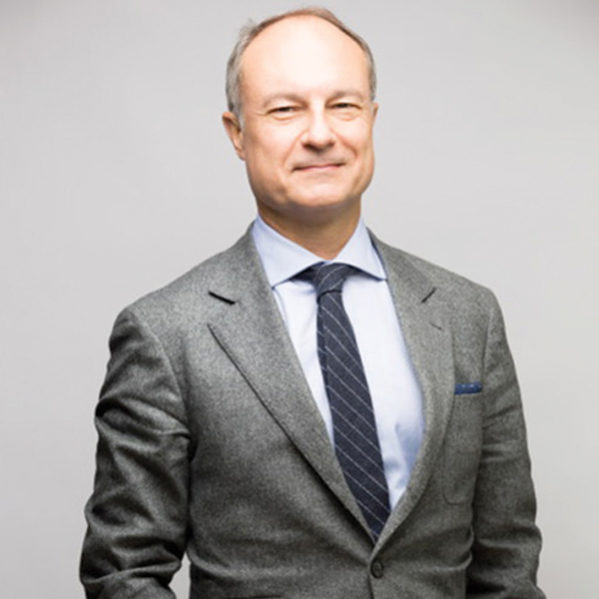Frédéric Engerer

Participating Events

Frédéric Engerer is intense. Seriously intense. He dominates a conversation. Assuming you can get a question in, his answers are long but direct, loaded with information. If he has a filter, you wouldn’t know it—he seems to hide nothing. And he seems to care about one thing and one thing only: Château Latour. He has a reputation for being severe, though those within Bordeaux will tell you that once you know him, you’ll appreciate where he’s coming from.
For starters, he’s coming from outside Bordeaux. Engerer joined the team at the famed first-growth estate in 1994, as a self-professed Burgundy lover and former owner of a wine bar.
“I came here as a wine lover, which is a different background as opposed to a technician,” said the wiry-framed, steely-eyed Engerer.
By 1998, Latour owner François Pinault had appointed Engerer as CEO. The latter immediately changed the entire team at the property, with ’99 the first vintage he considers under his control. Then Engerer oversaw an entire renovation of the cellar facility from 2000 through 2002. From there, he went to work rethinking the wines.
“It was several steps,” said Engerer. “First, the old Cabernet parcels had always been kept together until 2000. So in 2000 we began to separate parcels. But then we realized we need to forget parcels and just vinify parts of the vineyard that are similar together, even if they are not in the same parcel.”
While explaining how he carved up the vineyards, Engerer pointed at a large map on the wall showing Latour’s 80 hectares of vines.
“We found old drainage systems that had broken, so water was influencing the vines through tunnels underneath the vineyard in different ways. So this sliver here we found out was acting differently from the parcel, and we realized it should go with the corner here,” he said, outlining small points in seemingly disparate parcels. As he continued, I could see a Burgundian approach to how he matched up smaller and smaller pieces of the vineyards. In a wine region where size matters, Engerer is going micro instead of macro.
In 2007, Engerer made another change, firing the maître de chai and assuming cellarmaster responsibilities himself. On the surface, it’s a slash-and-burn approach, but after spending some time with Engerer, you realize he is so singularly focused and driven that he does everything with a plan in place. Still, appointing himself in charge of the technical side came with a warning.
“Pinault said to me, ‘It’s like when a football team owner becomes the coach. It’s probably not the best way to do it. If it doesn’t work, I’ll know who to fire,’” recounted Engerer.
How’s that for having a fire lit under you? Though Engerer hardly needs it.
“But you have to understand. This place is like a Picasso on the wall. Maybe that’s not the best analogy. But Pinault doesn’t give a [bleep] what it costs to make it as perfect as possible. Nothing is ever sacrificed because of cost. Everything will be done as it needs to be. ‘Every 10 years in a business you have to rip up the paper, throw it away and start all over,’ he said.” Engerer stopped there to take a rare pause. That’s when you know he really wants the point to sink in.
And while Engerer has assumed full control of the day-to-day, he’s smart enough to know where he needs help. He’s also daring enough to get that help from unlikely places.
“Vineyards, geological analysis, how to launch a biodynamic program—these are my areas of weakness,” said Engerer.
So, did he hire a big-name outside consultant to come in and help? No. Instead, Engerer plucked a 30-year-old fresh-out-of-school, Pénélope Godefroy, and put her in charge of the vineyards. Her role will only grow, as Engerer looks to the future of Latour’s aging vines.
“You can replace vine by vine for a while, but eventually you have to replace an entire plot. We have no emergencies now, but this will be the biggest task we have in the next 10 years, as we do have an old vineyard,” he said.
Engerer uses the same buzzword—”precision”—as others in Bordeaux. The cellar gleams with new stainless-steel tanks and the the barrels in the chai look like they were aligned with a laser. But while cost is not a concern and Engerer is clearly a modernist, he does not rely solely on technology. Three manual double sorting tables sit in the reception area. Where’s the optical sorter, the new-fangled toy that has become the darling of many châteaus of the region?
‘Never,” he said flatly. ‘If you control the quality of fruit in the vineyard, you never need one of those things. I will never, ever buy one,” he said, taking one of those pauses. ‘If I need sorting done, I have three table de tris (sorting tables), double-sorting, and can have 18 people checking fruit for three straight weeks.”
Engerer will get a chance to show what all the hard work has led to in the ’09 and ‘10 vintages. As a first-growth estate, Latour is expected to excel, but Engerer wants to take it higher than that, and he hints at where he thinks he may have hit the mark.
‘In ’09 everything was really extroverted and there were one or two lots that crossed the yellow line,” he said. ‘In ’10 it’s a rocking-chair vinification. Higher acidity, great balance.”
There are now three wines produced here, starting first with the Pauillac de Château Latour, a 5,000-case wine that sees no new oak. The 2009 is tight, with a gorgeous beam of unadorned black licorice and graphite and a driven finish. No throwaway, it’s easily outstanding.
‘The Pauillac is rich and chewy, but fun,” said Engerer, using a word that seems a little incongruous for such an intense individual.
The second wine of the estate, the Forts de Latour (typically 12,000 cases produced) sees up to 50 percent new oak. At this point, the 2009 version is very open, despite the oak, with inviting blackberry, roasted vanilla, espresso and mineral notes that are long and superbly focused.
‘In the Forts, you start to see how the selection comes in,” said Engerer. ‘There’s more length, finesse.”
The grand vin usually totals around 10,000 cases, and the Château Latour Pauillac 2009 is an awesome wine in the making. It’s dense but lithe, super fine-grained and with incredible length that lets a range of red and black currant, black tea, roasted espresso bean and mineral notes sail on.
‘It’s rare to have a rich, lush, long vintage that’s also dense and compact underneath,” said Engerer. ‘The personality is a bit crazier, more fun, than the ’05, which is much more serious.”
So perhaps that’s the key now for Latour. Mixing in a little fun with all the serious intensity?


